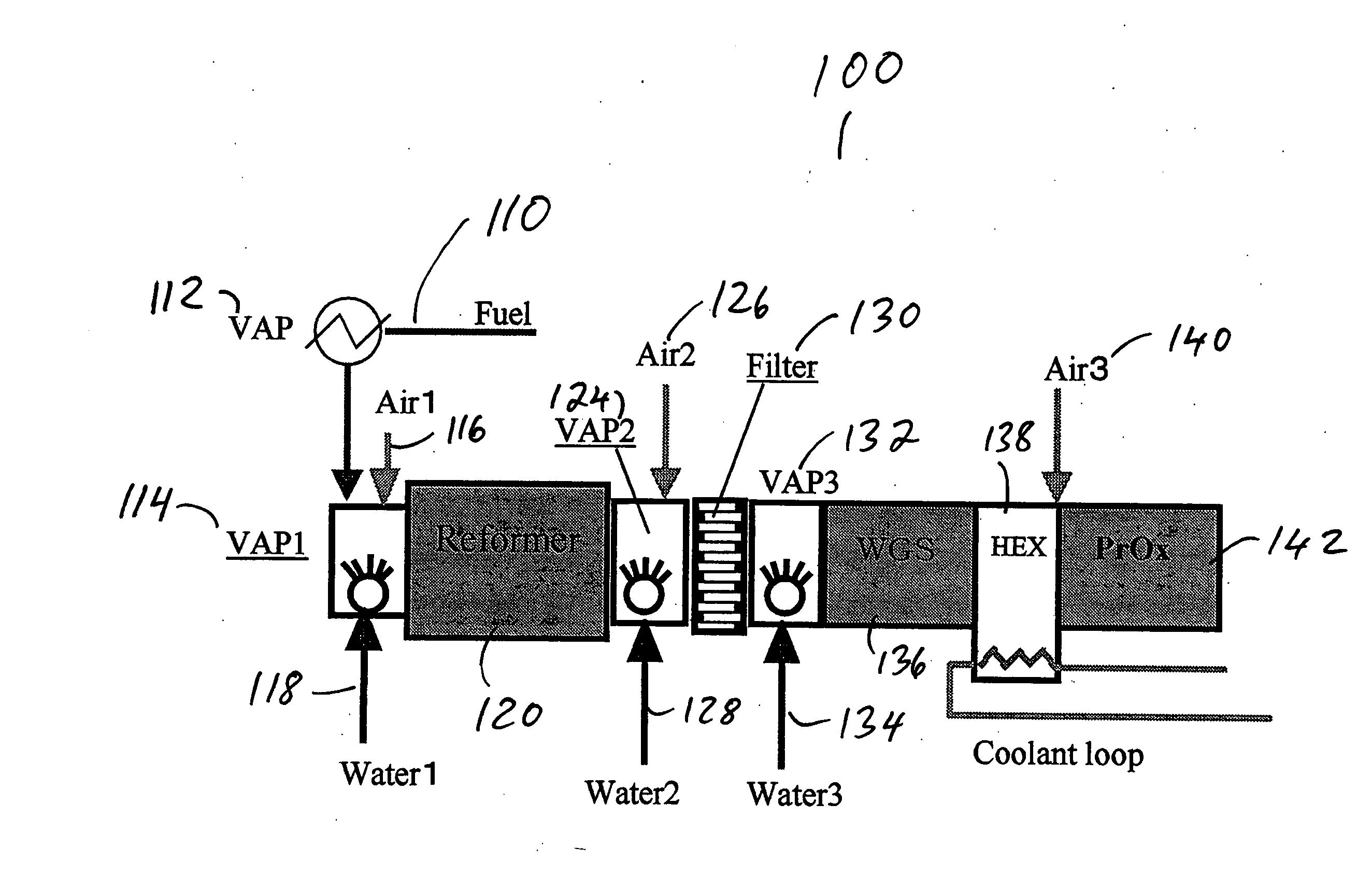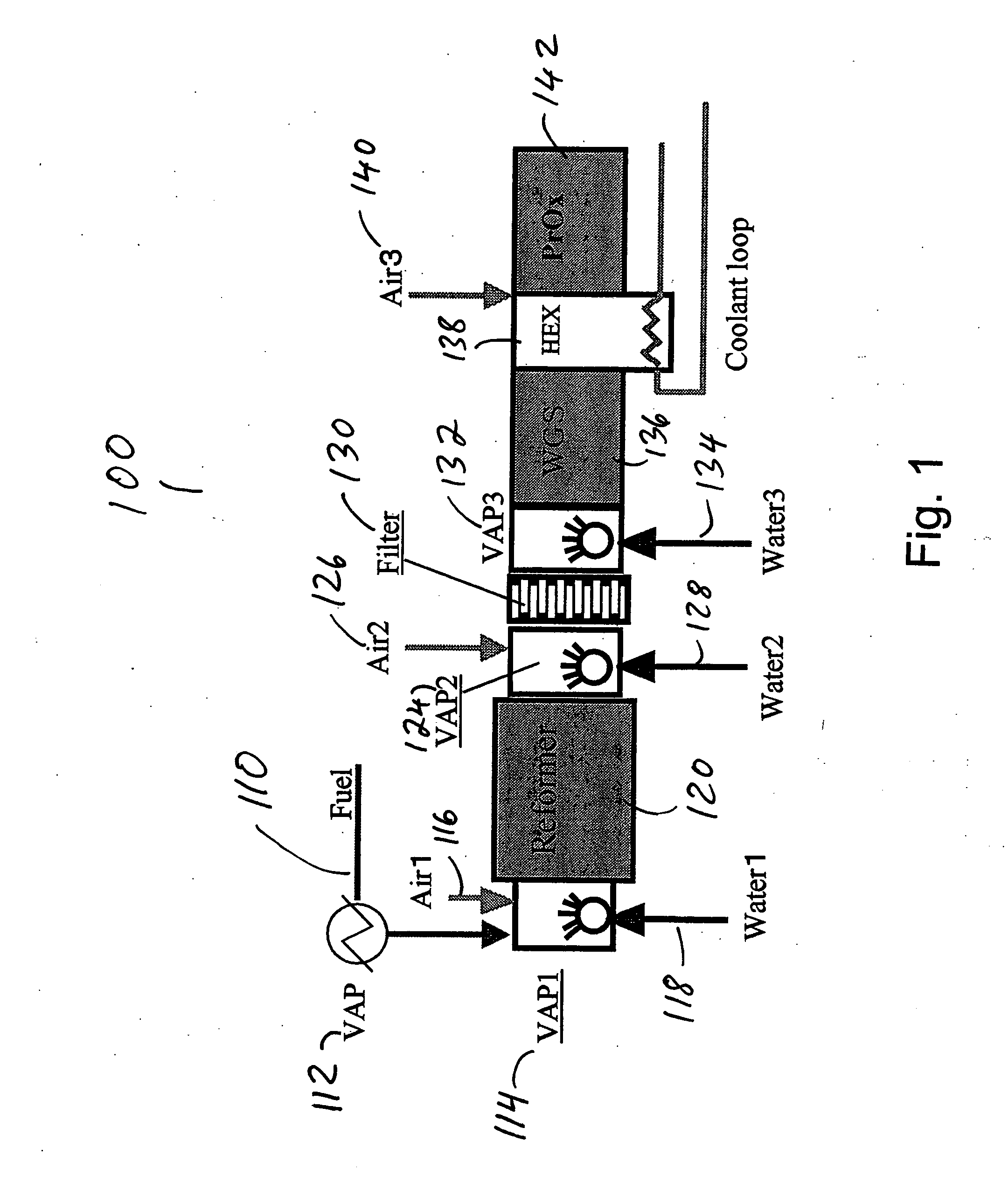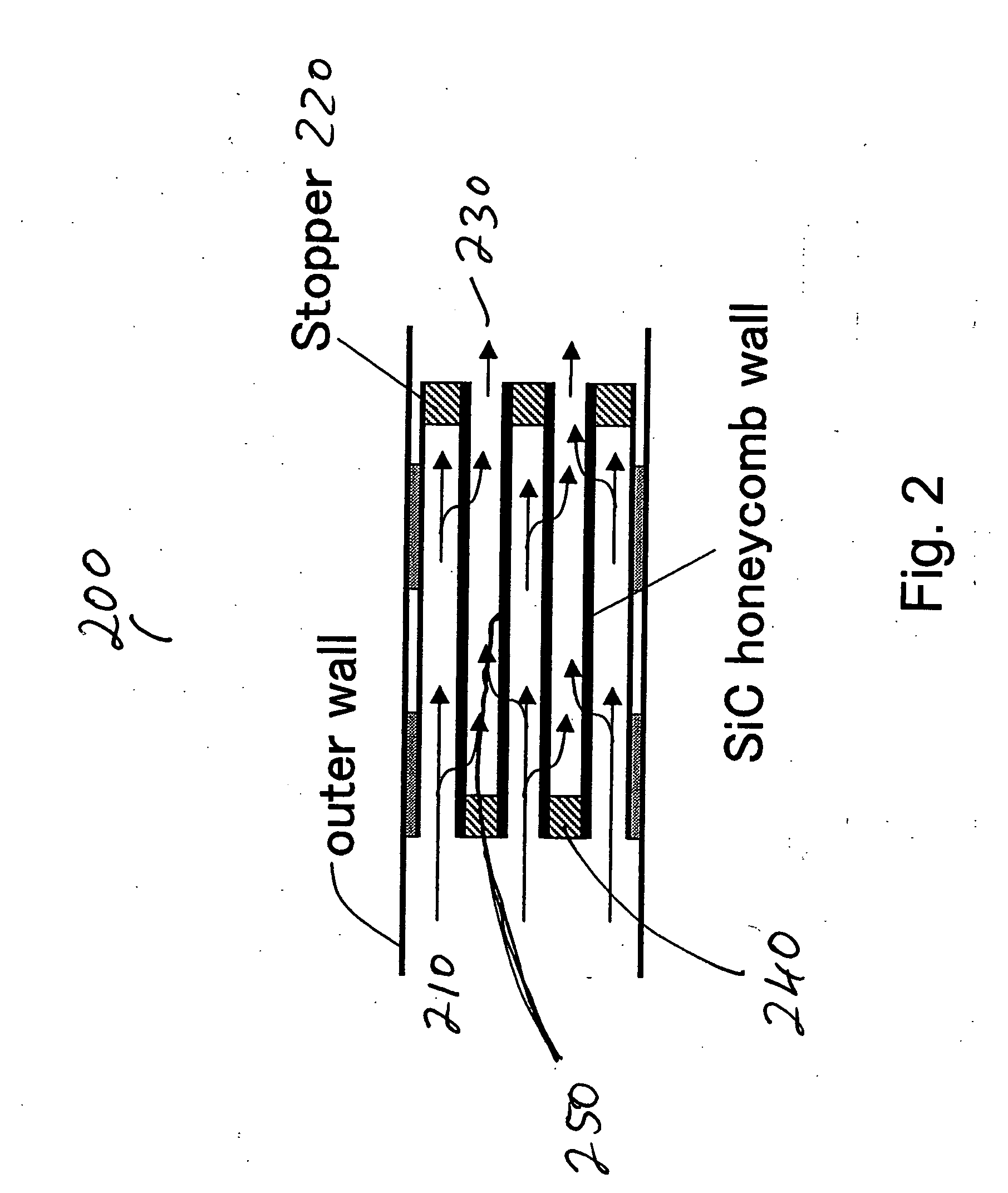Fuel processing system for reforming hydrocarbon fuel
- Summary
- Abstract
- Description
- Claims
- Application Information
AI Technical Summary
Benefits of technology
Problems solved by technology
Method used
Image
Examples
Embodiment Construction
[0022] The present invention stems from the discovery that reforming hydrocarbon based fuels can lead to the development or formation of non-gaseous particles, such as unreacted or partially reacted hydrocarbon particles, i.e. generally referred to as soot, and that the oxidation of the soot can be accomplished during the reforming process and under the reducing atmosphere of the reformate stream by adding water as an oxidant to combust or oxidize the soot collected on a filter. As noted in the background section, air has been used to oxidize soot collected on a filter. However, the sole introduction of air has potential deleterious effects as noted in the background section.
[0023] Generally, the present invention applies to a fuel processing system for a fuel cell. A fuel cell relies on hydrogen for power which can be produced in a fuel processing system by reforming hydrocarbon fuels. During this process, soot can be generated which adversely effects various components in the sys...
PUM
 Login to View More
Login to View More Abstract
Description
Claims
Application Information
 Login to View More
Login to View More - R&D
- Intellectual Property
- Life Sciences
- Materials
- Tech Scout
- Unparalleled Data Quality
- Higher Quality Content
- 60% Fewer Hallucinations
Browse by: Latest US Patents, China's latest patents, Technical Efficacy Thesaurus, Application Domain, Technology Topic, Popular Technical Reports.
© 2025 PatSnap. All rights reserved.Legal|Privacy policy|Modern Slavery Act Transparency Statement|Sitemap|About US| Contact US: help@patsnap.com



